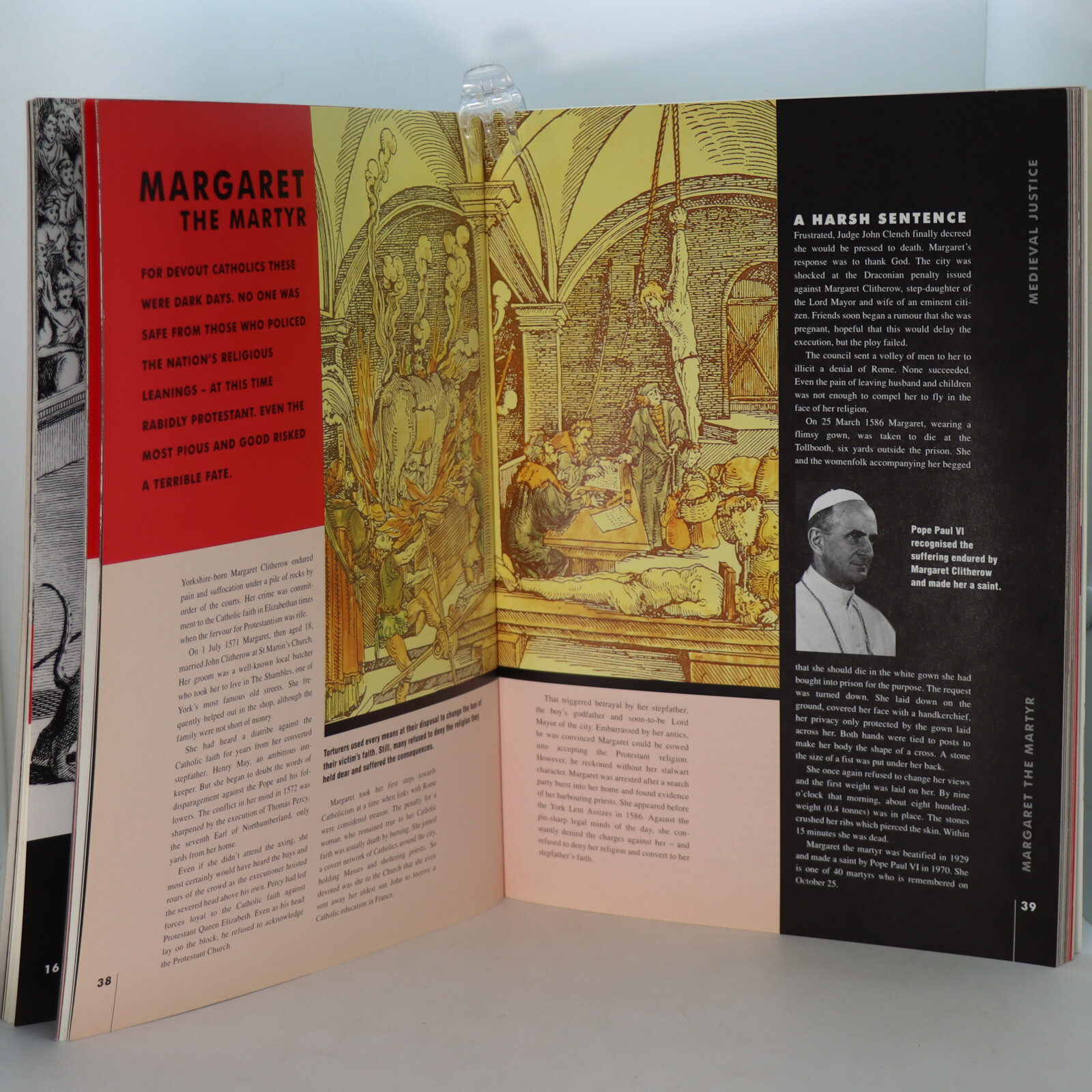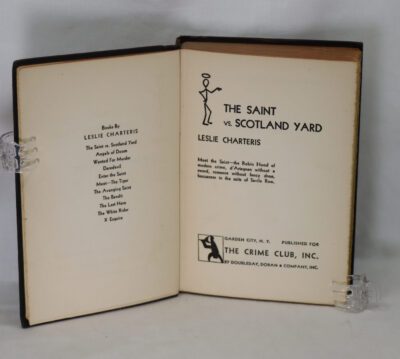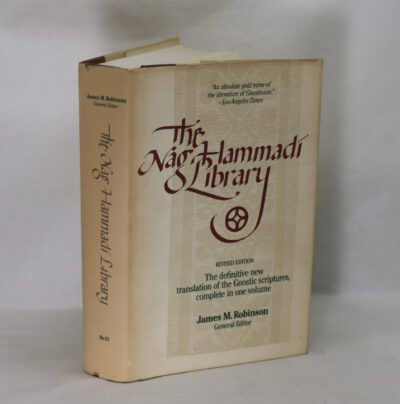History of Punishment & Torture.
ISBN: 9781627795135
Printed: 2000
Publisher: Hamlyn. London
| Dimensions | 22 × 30 × 1.5 cm |
|---|---|
| Language |
Language: English
Size (cminches): 22 x 30 x 1.5
Condition: Fine (See explanation of ratings)
Your items
Item information
Description
White title and image of a witch burning on the front board. Electric chair on the back board.
F.B.A. provides an in-depth photographic presentation of this item to stimulate your feeling and touch. More traditional book descriptions are immediately available.
A well-produced book
A highly illustrated and accessible chronicle of one of the world’s oldest and most unpopular practises: punishment and torture. The book is organised into seven chapters, each charting the evolution of various types of punishment, including capital punishment, penal servitude transportation and corporal punishment. Each of these chapters deals with topics as diverse as the Tolpuddle Martyrs and the Spanish Inquisition. All of the subjects covered are placed in the social and legal context with a range of historical images and photographs.
Review: This is a dare-kind of book, full of excellent illustrations, line drawings and plates. And when a picture is worth a thousand words, then few additional words are required. Ms. Karen has stuck to this rule and has been mercifully brief. Not that she doesn’t like writing or can write well. The 180-odd pages are full of full-page and half page illustrations, most of them of high quality. The accompanying write-up is also of good quality. It tends to be descriptive / narrative. Not much analysis is added, but then none is expected in a book of this kind.
The title of the book indicates a claim of universality: History of Punishment and Torture. However, as happens with most works of this kind, the history is only partial and limited to Western Christian societies. For instance, there is no mention of torture in non-Christian societies such as Arab countries, or Japan, China, India or South-east Asia or many of the tribal societies. American Indian tribes are also not covered. Russia is briefly mentioned but Mongolia has been left out, not even mentioned. So really, the book should have had a sub-title: History of Punishment and Torture – Last 2000 years in the Western Societies.
However, there are some gaps even in this. Nazi torture of Jews has been left out. Some juicy tid-bits of the Colonial period have also not been covered. Perhaps the author’s intention is to throw a good scare into the ordinary Western reader, and in this she appears to have won hands down.
The book has been designed around seven main headings, including one on inquisition, another on witches, and then a rather long one on capital punishment. Each of the headings is sub-divided into topics. The style of writing is racy – Ms. Karen is a journalist, so this comes easy. All in all, a good buy. Try to avoid reading it before or after a heavy meal, though.
Want to know more about this item?

Related products
Share this Page with a friend










